Link About It: This Week’s Picks
Astounding images of space, environmentally conscious oyster farmers, hip-hop’s contribution to HIV activism and more
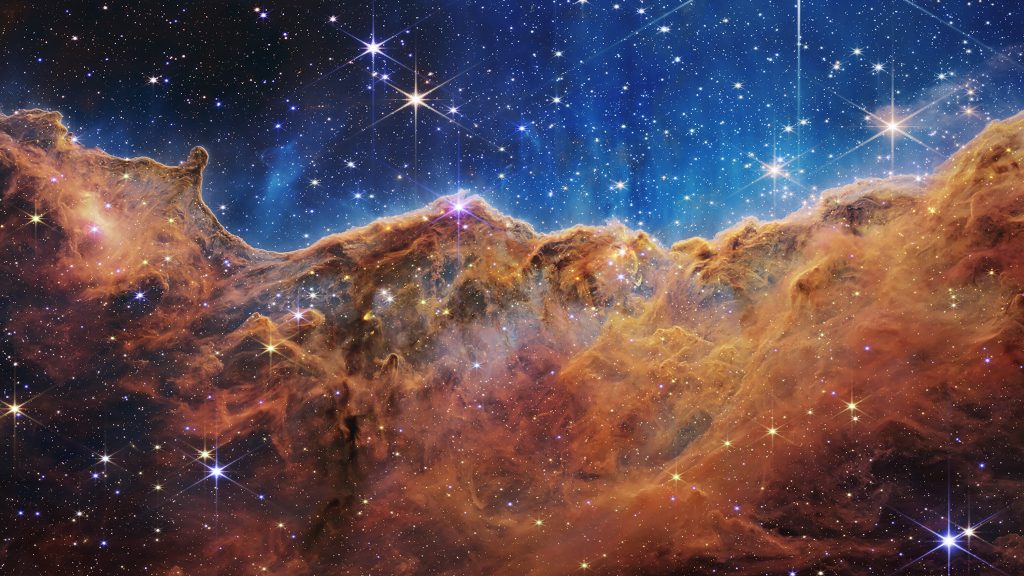
Photographer Barbara Iweins Documented All 12,795 Objects She Owns
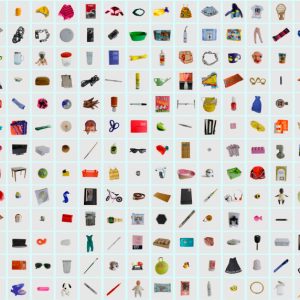 A vibrator, a mold of teeth and metal combs to extract head lice: these are just some of the 12,795 objects that photographer Barbara Iweins captured when she set out to document every item she owns. The project, which is covered in the book Katalog and distilled into an accompanying exhibit of the same name at Rencontres d’Arles until 25 September, was sparked after Iweins moved houses for the 11th time. “When I started, I really believed that I was exhausted of moving home and moving my stuff around,” she tells CNN. “And then I realized that it wasn’t about that at all. It was more like an act of self-preservation—that doing something (for the series) every day was really about organizing my life in my head. It was a positive process.” The relatable and thought-provoking images not only amount to a story of Iweins’ life, but they also provide unique insight. She learned, for instance, that 16% of her items are blue, 22% of her clothes are black and 19% of her books are unread. More critically, the series serves as a reflection on people and their possessions, materialism and consumerism and the therapeutic aspect of decluttering. Learn more at CNN.
A vibrator, a mold of teeth and metal combs to extract head lice: these are just some of the 12,795 objects that photographer Barbara Iweins captured when she set out to document every item she owns. The project, which is covered in the book Katalog and distilled into an accompanying exhibit of the same name at Rencontres d’Arles until 25 September, was sparked after Iweins moved houses for the 11th time. “When I started, I really believed that I was exhausted of moving home and moving my stuff around,” she tells CNN. “And then I realized that it wasn’t about that at all. It was more like an act of self-preservation—that doing something (for the series) every day was really about organizing my life in my head. It was a positive process.” The relatable and thought-provoking images not only amount to a story of Iweins’ life, but they also provide unique insight. She learned, for instance, that 16% of her items are blue, 22% of her clothes are black and 19% of her books are unread. More critically, the series serves as a reflection on people and their possessions, materialism and consumerism and the therapeutic aspect of decluttering. Learn more at CNN.
Image courtesy of Barbara Iweins
The World’s Smallest, Remote-Controlled Walking Robot
 Researchers at Northwestern University created a crab-shaped robot that is smaller than a flea, measuring just half a millimeter—making it the smallest-ever remote-controlled walking robot. The robot can bend, twist, crawl and leap, all without relying on complex hardware. Rather, the micro-robot’s movement utilizes an alloy that can “remember” shape when heated. Researchers point a laser beam at the robot to heat up several targeted spots and when it cools, a thin layer of glass restores the robot’s shape. This shapeshifting enables locomotion. Pointing the laser from left to right, for instance, causes the robot to move from right to left. To design the crab, scientists looked to children’s pop-up books, fabricating precursors on 2D geometries that are bonded to slightly stretched rubber substrates that cause the crab to pop into a defined form. This assembly and mobility is highly versatile, allowing the scientists to craft a multitude of shapes which could become critical agents in minimally invasive medical procedures. Learn more about it at SciTechDaily.
Researchers at Northwestern University created a crab-shaped robot that is smaller than a flea, measuring just half a millimeter—making it the smallest-ever remote-controlled walking robot. The robot can bend, twist, crawl and leap, all without relying on complex hardware. Rather, the micro-robot’s movement utilizes an alloy that can “remember” shape when heated. Researchers point a laser beam at the robot to heat up several targeted spots and when it cools, a thin layer of glass restores the robot’s shape. This shapeshifting enables locomotion. Pointing the laser from left to right, for instance, causes the robot to move from right to left. To design the crab, scientists looked to children’s pop-up books, fabricating precursors on 2D geometries that are bonded to slightly stretched rubber substrates that cause the crab to pop into a defined form. This assembly and mobility is highly versatile, allowing the scientists to craft a multitude of shapes which could become critical agents in minimally invasive medical procedures. Learn more about it at SciTechDaily.
Image courtesy of Northwestern University
Webb’s First Deep Field Image Provides An Astounding View
 A super-sharp image of space has been taken by NASA’s James Webb Space Telescope, showing thousands of galaxies in just a tiny section of the universe. The shot (known as Webb’s First Deep Field) is a composite made from images taken at different wavelengths over 12.5 hours and shows a galaxy cluster called SMACS 0723. Every object—from the faint, tiny dots to the bright, odd-shaped forms—is a galaxy (aside from those with “spikes,” which are stars). “If you held a grain of sand on the tip of your finger at arm’s length, that is the part of the universe that you’re seeing,” NASA Administrator Bill Nelson says. “Just one little speck of the universe.” Over the next few decades, Webb will provide more images and fundamentally affect how we understand the universe—and our existence within it. Read more at PBS.
A super-sharp image of space has been taken by NASA’s James Webb Space Telescope, showing thousands of galaxies in just a tiny section of the universe. The shot (known as Webb’s First Deep Field) is a composite made from images taken at different wavelengths over 12.5 hours and shows a galaxy cluster called SMACS 0723. Every object—from the faint, tiny dots to the bright, odd-shaped forms—is a galaxy (aside from those with “spikes,” which are stars). “If you held a grain of sand on the tip of your finger at arm’s length, that is the part of the universe that you’re seeing,” NASA Administrator Bill Nelson says. “Just one little speck of the universe.” Over the next few decades, Webb will provide more images and fundamentally affect how we understand the universe—and our existence within it. Read more at PBS.
Image courtesy of NASA, ESA, CSA and STScI
Japanese Scientists Propose New Artificial Gravity Architecture for Space Habitats
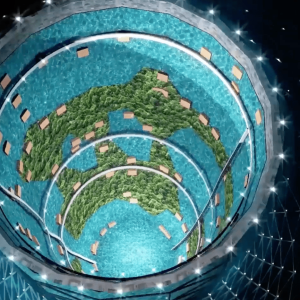 Developed by a research team from Kyoto University’s SIC Manned Cosmology Research Center and the construction firm Kajima Corporation, “The Glass” is a 1,300-foot-tall artificial gravity living facility concept. By making a complete rotation every 20 seconds, the habitat is able to use centrifugal force to mimic the gravity conditions of Earth. Inside, the scientists have attempted to approximate other Earth-like living conditions, as well. The team believes it’s possible to assemble a prototype on the moon or Mars by 2050. They’ve also begun to develop the interplanetary transportation system required to move such a structure. Read more about this inspiring vision of the future, and watch a video, over at Quartz.
Developed by a research team from Kyoto University’s SIC Manned Cosmology Research Center and the construction firm Kajima Corporation, “The Glass” is a 1,300-foot-tall artificial gravity living facility concept. By making a complete rotation every 20 seconds, the habitat is able to use centrifugal force to mimic the gravity conditions of Earth. Inside, the scientists have attempted to approximate other Earth-like living conditions, as well. The team believes it’s possible to assemble a prototype on the moon or Mars by 2050. They’ve also begun to develop the interplanetary transportation system required to move such a structure. Read more about this inspiring vision of the future, and watch a video, over at Quartz.
Image courtesy of Kajima Corporation
Getty Images Opens Access to 30,000 Rare Photos of the Black Diaspora
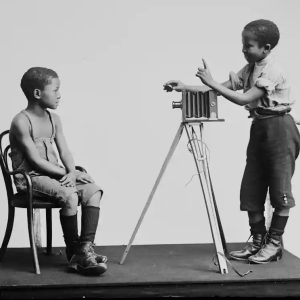 Getty Images has opened access to their Black History & Culture Collection, which includes around 30,000 rare images of the Black diaspora in the UK and US. Free to use for not-for-profit or educational purposes, the collection spans the 19th century to today and includes 20 categories from politics to women’s empowerment, LGBTQ+, education, hair and more. To curate the images, Getty partnered with organizations and academic institutions that center on Black history, such as Black History Walks, Ohio State University and Black Archives. “The inception of this began in trying to respond to George Floyd’s murder,” says the collection’s project manager, Kwame Asiedu. “This project is really important because it’s about access and education and empowerment. For so long, those three words—regardless of whether it’s an image collection—have been missing from a lot of Black communities around the world.” Read more about the project’s aim to decolonize history at The Guardian.
Getty Images has opened access to their Black History & Culture Collection, which includes around 30,000 rare images of the Black diaspora in the UK and US. Free to use for not-for-profit or educational purposes, the collection spans the 19th century to today and includes 20 categories from politics to women’s empowerment, LGBTQ+, education, hair and more. To curate the images, Getty partnered with organizations and academic institutions that center on Black history, such as Black History Walks, Ohio State University and Black Archives. “The inception of this began in trying to respond to George Floyd’s murder,” says the collection’s project manager, Kwame Asiedu. “This project is really important because it’s about access and education and empowerment. For so long, those three words—regardless of whether it’s an image collection—have been missing from a lot of Black communities around the world.” Read more about the project’s aim to decolonize history at The Guardian.
Image courtesy of London Stereoscopic Company/Getty Images
Tech Startup Nothing Launches Highly Anticipated Phone
 Tech startup Nothing—helmed by co-founder and CEO Carl Pei—generated plenty of attention with their first product, the Ear (1), designed in collaboration with Teenage Engineering. Now, their foray into the smartphone space has been realized with the highly anticipated Nothing Phone (1). Design-wise (and thanks in part to Teenage Engineering’s retro-influenced style) it’s eye-catching due to a transparent back and flashing LED “glyph.” Aside from aesthetics, it’s “awfully familiar,” writes Allison Johnson for The Verge. “And that’s not really a bad thing.” The mid-range Android device features a 6.55-inch OLED with smooth scrolling on its 120Hz screen and has 12GB of RAM. With two cameras, it’s Wi-Fi 6E compatible and has a dust- and water-resistance rating of IP53, which means it’s splash-proof. For a hands-on review of this $475 smartphone visit The Verge.
Tech startup Nothing—helmed by co-founder and CEO Carl Pei—generated plenty of attention with their first product, the Ear (1), designed in collaboration with Teenage Engineering. Now, their foray into the smartphone space has been realized with the highly anticipated Nothing Phone (1). Design-wise (and thanks in part to Teenage Engineering’s retro-influenced style) it’s eye-catching due to a transparent back and flashing LED “glyph.” Aside from aesthetics, it’s “awfully familiar,” writes Allison Johnson for The Verge. “And that’s not really a bad thing.” The mid-range Android device features a 6.55-inch OLED with smooth scrolling on its 120Hz screen and has 12GB of RAM. With two cameras, it’s Wi-Fi 6E compatible and has a dust- and water-resistance rating of IP53, which means it’s splash-proof. For a hands-on review of this $475 smartphone visit The Verge.
Image courtesy of Nothing
Hip-Hop’s Vital Contributions to HIV Activism
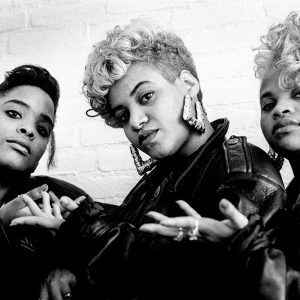 The stories told about HIV and activism surrounding the virus are often incomplete, and focus solely on white gay men. But, as Jake Hall writes for High Snobiety, “the first person to die of AIDS in the US was a Black teenage boy named Robert Rayford.” This forgotten fact encapsulates how dominant narratives have excluded the toll of the virus on Black communities worldwide and the subsequent role hip-hop played in fighting against it. From Salt-N-Pepa’s 1992 “Let’s Talk About AIDS” (a rework of their massive 1991 single “Let’s Talk About Sex”) to Disposable Heroes of Hiphoprisy’s “Positive” and Wu-Tang Clan’s “America,” many hip-hop icons helped to remove stigma through informative lyrics and positive messaging. In the ’80s and ’90s, these artists fought against a prominent conspiracy theory that the virus was a government-made biological weapon against Black people (an idea that gained traction given the country’s history of medicalized racism). They also sought to stop misinformation surrounding the virus and worked to educate their listeners. Learn more the Black artists who paved the way for progress at High Snobiety.
The stories told about HIV and activism surrounding the virus are often incomplete, and focus solely on white gay men. But, as Jake Hall writes for High Snobiety, “the first person to die of AIDS in the US was a Black teenage boy named Robert Rayford.” This forgotten fact encapsulates how dominant narratives have excluded the toll of the virus on Black communities worldwide and the subsequent role hip-hop played in fighting against it. From Salt-N-Pepa’s 1992 “Let’s Talk About AIDS” (a rework of their massive 1991 single “Let’s Talk About Sex”) to Disposable Heroes of Hiphoprisy’s “Positive” and Wu-Tang Clan’s “America,” many hip-hop icons helped to remove stigma through informative lyrics and positive messaging. In the ’80s and ’90s, these artists fought against a prominent conspiracy theory that the virus was a government-made biological weapon against Black people (an idea that gained traction given the country’s history of medicalized racism). They also sought to stop misinformation surrounding the virus and worked to educate their listeners. Learn more the Black artists who paved the way for progress at High Snobiety.
Image courtesy of Getty Images/Paul Bergen
Environmentally Conscious Oyster Farmers Find Plastic Alternatives
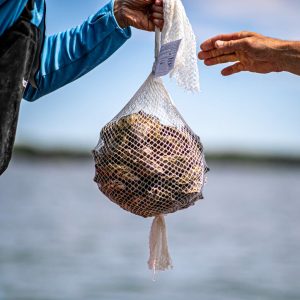 In an effort to use less plastic and remove plastic waste from waterways, environmentally conscious oyster farmers are turning to (and back to, in some cases) wood, metal, cork and even mushrooms to reduce damage to waterways. Modern Farmer interviewed three aquaculture professionals—Abby Barrows of Long Cove Sea Farm, Eric Oransky of Maine Ocean Farms and Jennifer Scappatura Harrington of Rhode Island-based Quonnie Siren Oysters—about their experiments with plastic alternatives from farming to packaging, and discovered that there are many trials in process. Harrington has been testing wooden holding tanks and says it “gives [the oysters] a different flavor, it’s slightly oaky.” Oransky has been working with Austrian company Packnatur to make “wood-based packaging [that’s] 100% compostable and biodegradable.” While there’s plenty more experimenting to be done, these thoughtful farmers are taking the first steps in what could be an industry shift. “These projects are a drop in the bucket, but it gives me hope that the ripple-out affects a broader paradigm shift in our materials,” Barrows tells Modern Farmer. Read more there.
In an effort to use less plastic and remove plastic waste from waterways, environmentally conscious oyster farmers are turning to (and back to, in some cases) wood, metal, cork and even mushrooms to reduce damage to waterways. Modern Farmer interviewed three aquaculture professionals—Abby Barrows of Long Cove Sea Farm, Eric Oransky of Maine Ocean Farms and Jennifer Scappatura Harrington of Rhode Island-based Quonnie Siren Oysters—about their experiments with plastic alternatives from farming to packaging, and discovered that there are many trials in process. Harrington has been testing wooden holding tanks and says it “gives [the oysters] a different flavor, it’s slightly oaky.” Oransky has been working with Austrian company Packnatur to make “wood-based packaging [that’s] 100% compostable and biodegradable.” While there’s plenty more experimenting to be done, these thoughtful farmers are taking the first steps in what could be an industry shift. “These projects are a drop in the bucket, but it gives me hope that the ripple-out affects a broader paradigm shift in our materials,” Barrows tells Modern Farmer. Read more there.
Image courtesy of Modern Farmer
Van Gogh Self-Portrait Discovered Behind Another Painting
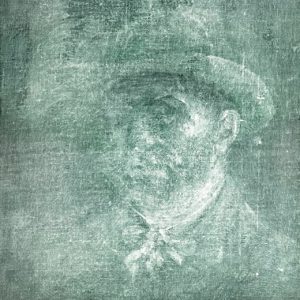 Hidden under “layers of glue and cardboard for more than a century,” a Van Gogh self-portrait has been discovered behind the artist’s 1885 painting, “Head of a Peasant Woman.” The self-portrait was revealed when conservators x-rayed the work ahead of the A Taste for Impressionism exhibition at Edinburgh’s Royal Scottish Academy, opening this month. “Moments like this are incredibly rare,” says Frances Fowle (senior curator of French art at the National Galleries of Scotland). In the hidden artwork, Van Gogh (who often reused canvases to save money) painted “a bearded sitter in a brimmed hat with a neckerchief loosely tied at the throat. He fixes the viewer with an intense stare, the right side of his face in shadow and his left ear clearly visible.” It will take time-consuming and meticulous conservation work to remove the glue (if it’s even possible) but the x-ray is on view with the rest of the Royal Scottish Academy show. Read more at CNN.
Hidden under “layers of glue and cardboard for more than a century,” a Van Gogh self-portrait has been discovered behind the artist’s 1885 painting, “Head of a Peasant Woman.” The self-portrait was revealed when conservators x-rayed the work ahead of the A Taste for Impressionism exhibition at Edinburgh’s Royal Scottish Academy, opening this month. “Moments like this are incredibly rare,” says Frances Fowle (senior curator of French art at the National Galleries of Scotland). In the hidden artwork, Van Gogh (who often reused canvases to save money) painted “a bearded sitter in a brimmed hat with a neckerchief loosely tied at the throat. He fixes the viewer with an intense stare, the right side of his face in shadow and his left ear clearly visible.” It will take time-consuming and meticulous conservation work to remove the glue (if it’s even possible) but the x-ray is on view with the rest of the Royal Scottish Academy show. Read more at CNN.
Image courtesy of National Galleries of Scotland
Link About It is our filtered look at the web, shared daily in Link and on social media, and rounded up every Saturday morning. Hero image courtesy of NASA, ESA, CSA and STScI












